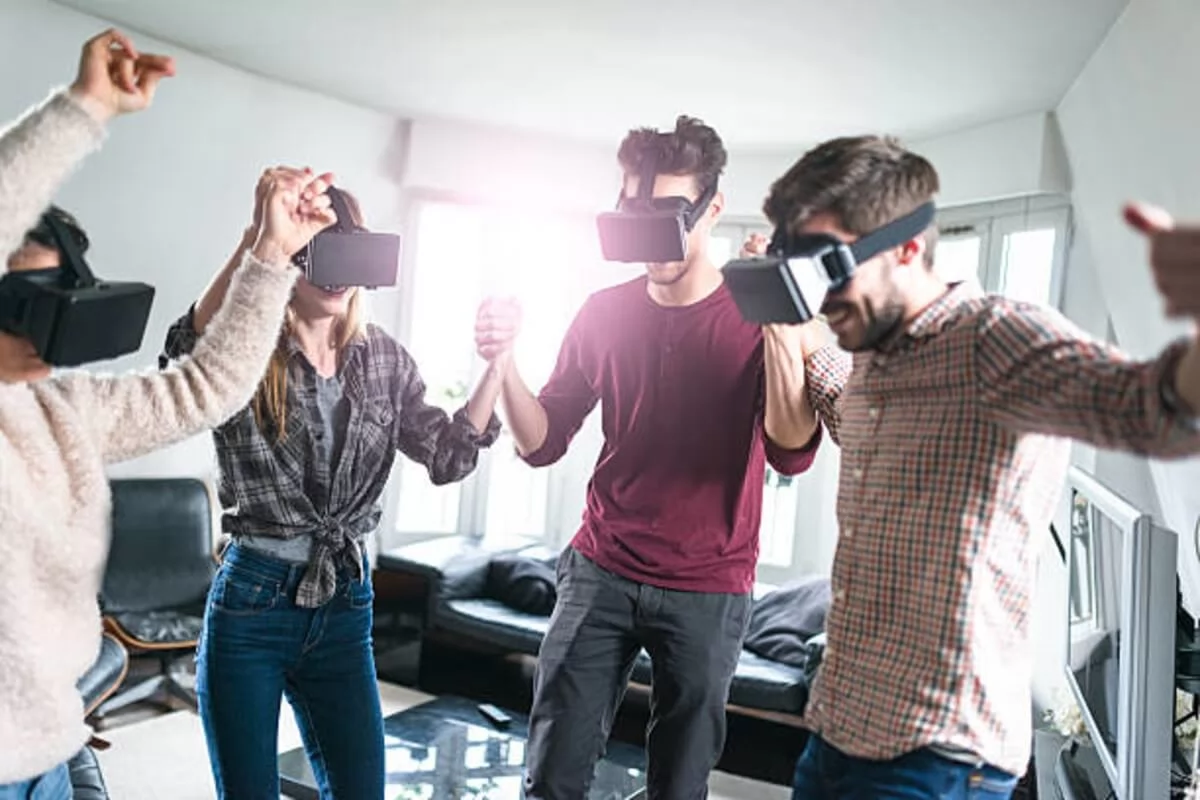The gaming industry has come a long way since Pong and Space Invaders. Nowadays, gamers can immerse themselves in fully immersive worlds that appear incredibly realistic due to advances in technology and the inventive use of generative art.
The adoption of generative AI is on the rise. Market.us estimates that this market was worth USD 10.6 billion in 2022 and forecasts it will expand at a CAGR of 31.4% from 2022-2032.
Generative art is now being utilized to generate algorithms and computer programs, revolutionizing the gaming experience and offering a glimpse of its future. This article will explore how immersive gaming will evolve with generative art in the future.
The Evolution of Immersive Gaming
Immersive gaming has come a long way since its inception. From simple pixelated graphics and basic sound effects to high-definition visuals, realistic soundscapes, and haptic feedback that engages players on an entirely new level.
Generative animation is an expressive form of artwork created through algorithms, codes, and mathematical equations. With 3D graphics and motion capture technology, games have become more realistic than ever before; its current state of immersion gaming proves impressive but cannot ignore generative art’s role in its future development.
Examples of popular games that have successfully utilized generative art include:
- No Man’s Sky: This game utilizes generative algorithms to create an infinite number of planets, animals, and landscapes. Each planet is unique with its own flora and fauna; players can explore the vast universe in search of new worlds and species.
- Minecraft: This game uses generative art to create an almost infinite world for players to explore and manipulate. Its simple blocky visuals have become iconic, with over 200 million copies sold around the world.
- Spore: The creation of the entire universe is based on generative art technology, from microbes to galaxies. Players begin by creating their own microbe and evolving it into a complex organism. They progress through different stages of evolution until reaching space exploration.
The Power of Generative Soundscapes and Graphics
Generative AI’s influence over immersive gaming experiences, especially soundscapes, and graphics, is undeniable. By employing generative algorithms, soundscapes can be created that change in real-time according to player actions – creating an ever-evolving audio landscape that keeps gamers engaged. This adds up to a more engaging and dynamic gaming environment which further adds to its enjoyment.
Generative graphics create realistic and dynamic gaming environments that adapt based on player actions. This creates a more engaging gameplay, wherein player choices have an actual impact on the world. The advantages of using generative art over traditional art in game development are numerous:
- Unique and constantly evolving artwork: Generative art allows for the creation of unique visuals that evolve and change over time. This helps keep the gaming experience fresh and engaging, as players are constantly presented with new visuals and environments.
- Cost-effectiveness: Relatively simple algorithms and software can be utilized when creating these algorithms using generative AI. This eventually reduces the need for expensive artwork and design. This can save game developers a significant amount of money, which can then be invested in other areas of the game.
- Flexibility: Game developers can leverage generative art to produce a vast array of custom-designed visuals and designs. This enables them to offer exceptional and inventive gaming encounters that distinguish them from their rivals.
The Future of Immersive Gaming with Generative Art
The potential of generative art to revolutionize gaming is immense. Developers are now creating endlessly repayable games that respond to player actions in real time. Machine learning and AI also hold great promise for immersive gaming with generative art in the future; these technologies could create even more realistic environments that respond to player input in real-time.
The potential of generative art and technology to revolutionize gaming is endless. Imagine future games that utilize generative art in unique and innovative ways. Some examples of possible future games include:
- One potential future game concept involves using generative art to create virtual worlds that appear identical to reality. Thanks to advances in graphics and processing power, developers can craft stunningly realistic environments for players to explore and interact with.
- Generative art makes creating unique and personalized characters, landscapes, and environments much simpler. Developers can now craft characters that are not only visually stunning but also possess their own personalities, abilities, and characteristics.
- Generative art can be used to craft never-ending quests and missions that are tailored specifically for each player. These could be generated in real-time based on the player’s preferences and play style, offering a personalized and constantly evolving gaming experience.
The future of immersive gaming with generative art is incredibly exciting. The creative use of algorithms and computer programs is transforming the gaming experience and creating new and unique worlds for players to explore.
Moreover, the impact of generative art on the gaming industry is significant, and its potential for the future is enormous. As technology continues to evolve, we can expect to see even more immersive and dynamic gaming experiences that push the boundaries of what’s possible.


